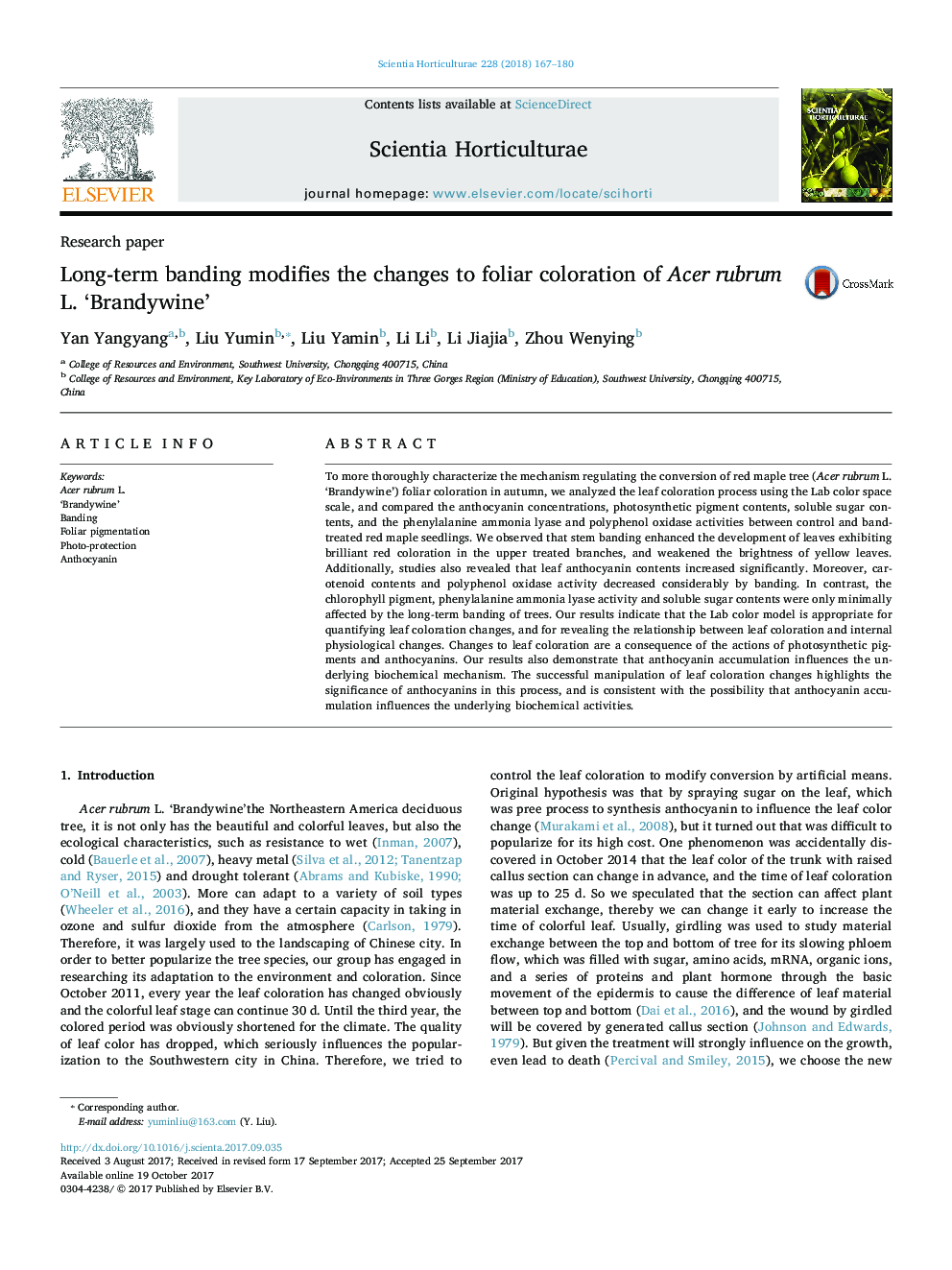| Article ID | Journal | Published Year | Pages | File Type |
|---|---|---|---|---|
| 5769224 | Scientia Horticulturae | 2018 | 14 Pages |
â¢Long-term banding can modifies the changes to foliar coloration of Acer rubrum L. 'Brandywine' by a serendipitous discovery.â¢Lab color parameter model can reveals the relationships between leaf coloration and internal physiological changes.â¢We studied the internal physiological differences between the bandings and the un-bandings.â¢Anthocyanin is the primary factor in the procession of leaf coloration changes in the Acer rubrum L. leaves.
To more thoroughly characterize the mechanism regulating the conversion of red maple tree (Acer rubrum L. 'Brandywine') foliar coloration in autumn, we analyzed the leaf coloration process using the Lab color space scale, and compared the anthocyanin concentrations, photosynthetic pigment contents, soluble sugar contents, and the phenylalanine ammonia lyase and polyphenol oxidase activities between control and band-treated red maple seedlings. We observed that stem banding enhanced the development of leaves exhibiting brilliant red coloration in the upper treated branches, and weakened the brightness of yellow leaves. Additionally, studies also revealed that leaf anthocyanin contents increased significantly. Moreover, carotenoid contents and polyphenol oxidase activity decreased considerably by banding. In contrast, the chlorophyll pigment, phenylalanine ammonia lyase activity and soluble sugar contents were only minimally affected by the long-term banding of trees. Our results indicate that the Lab color model is appropriate for quantifying leaf coloration changes, and for revealing the relationship between leaf coloration and internal physiological changes. Changes to leaf coloration are a consequence of the actions of photosynthetic pigments and anthocyanins. Our results also demonstrate that anthocyanin accumulation influences the underlying biochemical mechanism. The successful manipulation of leaf coloration changes highlights the significance of anthocyanins in this process, and is consistent with the possibility that anthocyanin accumulation influences the underlying biochemical activities.
Graphical abstractDownload high-res image (234KB)Download full-size image
